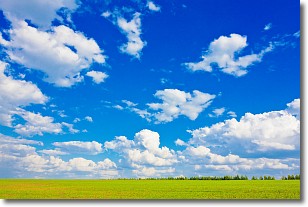Weather Alert in Oregon
Red Flag Warning issued July 29 at 2:22PM PDT until July 30 at 11:00PM PDT by NWS Portland OR
AREAS AFFECTED: Northern Willamette National Forest; Southern Willamette National Forest
DESCRIPTION: ...RED FLAG WARNING NOW IN EFFECT FROM 11 AM TO 11 PM PDT WEDNESDAY FOR THUNDERSTORMS FOR FIRE WEATHER ZONES 689 AND 690... ...FIRE WEATHER WATCH REMAINS IN EFFECT FROM 11 PM PDT WEDNESDAY TO 11 AM PDT THURSDAY FOR THUNDERSTORMS FOR FIRE WEATHER ZONES 689 AND 690... ...15-35% CHANCE OF THUNDERSTORMS PRODUCING LIGHTNING WEDNESDAY THROUGH THURSDAY MORNING... ...FIRE WEATHER WATCH REMAINS IN EFFECT FROM 11 PM PDT WEDNESDAY TO 11 AM PDT THURSDAY FOR THUNDERSTORMS FOR FIRE WEATHER ZONES 689 AND 690... The National Weather Service in Portland has issued a Red Flag Warning for thunderstorms, which is in effect from 11 AM to 11 PM PDT Wednesday. The previous Fire Weather Watch remains in effect from 11 PM PDT Wednesday to 11 AM PDT Thursday. * AFFECTED AREA...In Oregon, Fire Weather Zone 689 Northern Willamette National Forest and Fire Weather Zone 690 Southern Willamette National Forest. * OUTFLOW WINDS...Brief and highly localized outflow wind gusts up to 35 mph possible with any shower or thunderstorm that passes by. * IMPACTS...Thunderstorm outflow winds may result in erratic fire spread. Frequent lightning and critically dry fuels may result in numerous fire starts.
INSTRUCTION: A Red Flag Warning means that critical fire weather conditions are either occurring now, or will shortly. A combination of the above conditions can contribute to extreme fire behavior. A Fire Weather Watch means that critical fire weather conditions are forecast to occur. Listen for later forecasts and possible Red Flag Warnings.
Want more detail? Get the Complete 7 Day and Night Detailed Forecast!
Current U.S. National Radar--Current
The Current National Weather Radar is shown below with a UTC Time (subtract 5 hours from UTC to get Eastern Time).

National Weather Forecast--Current
The Current National Weather Forecast and National Weather Map are shown below.

National Weather Forecast for Tomorrow
Tomorrow National Weather Forecast and Tomorrow National Weather Map are show below.

North America Water Vapor (Moisture)
This map shows recent moisture content over North America. Bright and colored areas show high moisture (ie, clouds); brown indicates very little moisture present; black indicates no moisture.

Weather Topic: What are Contrails?
Home - Education - Cloud Types - Contrails
 Next Topic: Cumulonimbus Clouds
Next Topic: Cumulonimbus Clouds
A contrail is an artificial cloud, created by the passing of an
aircraft.
Contrails form because water vapor in the exhaust of aircraft engines is suspended
in the air under certain temperatures and humidity conditions. These contrails
are called exhaust contrails.
Another type of contrail can form due to a temporary reduction in air pressure
moving over the plane's surface, causing condensation.
These are called aerodynamic contrails.
When you can see your breath on a cold day, it is also because of condensation.
The reason contrails last longer than the condensation from your breath is
because the water in contrails freezes into ice particles.
Next Topic: Cumulonimbus Clouds
Weather Topic: What are Cumulus Clouds?
Home - Education - Cloud Types - Cumulus Clouds
 Next Topic: Drizzle
Next Topic: Drizzle
Cumulus clouds are fluffy and textured with rounded tops, and
may have flat bottoms. The border of a cumulus cloud
is clearly defined, and can have the appearance of cotton or cauliflower.
Cumulus clouds form at low altitudes (rarely above 2 km) but can grow very tall,
becoming cumulus congestus and possibly the even taller cumulonimbus clouds.
When cumulus clouds become taller, they have a greater chance of producing precipitation.
Next Topic: Drizzle
Current conditions powered by WeatherAPI.com




